HydroScientific™
GUIDE TO CLEANING, SANITIZING & STERILIZING
This resource provides general information about cleaning, sanitizing, and disinfecting; guidelines for HydroScientific All PP Filter Cartridges.
Cleaning –
Please use one of the following cleaning agents for cleaning All PP filter cartridges. Immerse cartridge and soak for at least 30 minutes in a container that has the prescribed concentration of the agent.

LIQUINOX
- Contact manufacturer for precise instructions and precautions pertaining to use for your specific application or cleaning needs.
www.alconox.com/liquinox/

ALCONOX
- Contact manufacturer for precise instructions and precautions pertaining to use for your specific application or cleaning needs.
www.alconox.com/alconox/

MINNCLEAN TF
- Contact manufacturer for precise instructions and precautions pertaining to use for your specific application or cleaning needs.
www.mcpur.com/disinfection/minnclean

TRITON X-100*
- Contact manufacturer for precise instructions and precautions pertaining to use for your specific application or cleaning needs.
* Triton X-100 made by Roche Diagnostics
Sanitizing –
In critical applications, use the following sanitizing agents to properly sanitize All PP Filter Cartridges prior to use. Immerse cartridge and soak for 30-60 minutes in the prescribed concentration of the agent.
For proper and effective sanitization raise the mixture’s temperature to 80˚F (27˚C).
For proper and effective sanitization raise the mixture’s temperature to 80˚F (27˚C).
BLEACH (SODIUM HYPOCHLORINE)
- Prepare a 5-10 ppm solution in lukewarm water.
- Immerse the cartridges in the solution.
HYDROGEN PEROXIDE (10%)
- Immerse the cartridges in 10% H2O2.
ETHANOL (70%)
- Immerse the cartridges in 70% Ethanol.
IPA (70%)
- Immerse the cartridges in 70% IPA.
CHLORINE DIOXIDE (CIO2)
- Add 2 oz. (59 ml) of Chlorine Dioxide to one gallon (3.79 liters) of lukewarm water (200 ppm).
ACID
- Immerse the cartridges in 1% solution of citric, acetic, nitric, phosphoric or hydrochloric acid.
PARACETIC ACID
- Immerse cartridges in 100-200 ppm solution.
CAUSTIC
- Rinse cartridges or soak overnight in 0.5-5% NaOH solution.
Sterilizing –
Use any of the following methods to properly sterilize
All PP Filter Cartridges
All PP Filter Cartridges
HOT WATER
- Use a clean water temperature of 176˚F (80˚C) and immerse the cartridges for 30 minutes.
STEAM
- Adjust the steam temperature to 250˚F (121˚C) and expose the cartridge to steam for 30 minutes.
WARNING: Cartridge MUST BE equipped with special end cap inserted to withstand steaming.
AUTOCLAVE
- Install the cartridges in the autoclave chamber. Raise the steam temperature to 250˚F (121˚C) and expose the cartridge for 30 minutes.
Final Rinse –
Only cleaned and sanitized All PP Filter Cartridges should be rinse.
- Rinse with plenty of clean water to remove any remaining cleaning and sanitizing agents.
Note: These instructions are to be used as a guide. The data within has been obtained from many sources and is considered to be accurate. HydroScientific does not assume liability for the accuracy and/or completeness of this data. Changes to the data can be made without notification. Temperature, Pressure, Flow Rates, Differential Pressures, Chemical Combinations and other unknown factors can affect performance in unknown ways. Limited Warranty: HydroScientific warrants their products to be free of material and workmanship defects. Determination of suitability of HydroScientific products for uses and applications contemplated by Buyer shall be the sole responsibility of Buyer. The end user/installer/buyer shall be liable for the product’s performance and suitability regarding their specific intended applications. End users should perform their own tests to determine suitability for each application.
© HydroScientific.

